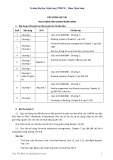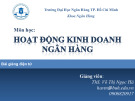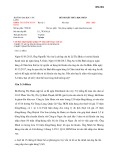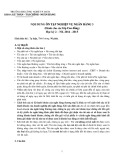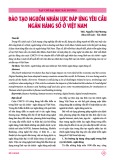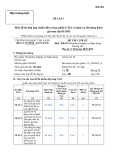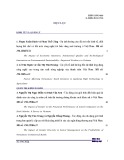
http://www.iaeme.com/IJM/index.asp 250 editor@iaeme.com
International Journal of Management (IJM)
Volume 7, Issue 7, November–December 2016, pp.250–256, Article ID: IJM_07_07_026
Available online at
http://www.iaeme.com/ijm/issues.asp?JType=IJM&VType=7&IType=7
Journal Impact Factor (2016): 8.1920 (Calculated by GISI) www.jifactor.com
ISSN Print: 0976-6502 and ISSN Online: 0976-6510
© IAEME Publication
PRODUCTIVITY ANALYSIS OF FOREIGN SECTOR
BANKS
Dr. P. K. Dhiman
Professor, Department of Management & Hum,
SLIET Longowal, Punjab, India
Rupani
Ph.D Research Scholar, Department of Management & Hum,
SLIET longowal, Punjab, India
ABSTRACT
In today’s era of globalization the customers are more and more demanding and their
expectations are changing with time in terms of various aspects like Quality, Quick & Effective
service. In this competitive environment it has become essential to retain existing and attract new
customers. For this purpose the banks should analyzed its productivity to make better policies. So
this study is confined to the measurement of productivity of Foreign sector banks. Information
Technology implementation has totally changed the way of Banking operations and revolutionized
the financial sector in India. So the measurement of the changes in the selected Five banks in terms
of Productivity on the basis of selected parameters is main focus. In the end the performance of Intra
sector banks in discussed in conclusion.
Key words: Productivity, PSBs’, Private sector banks, Information Technology (IT), Foreign
Sector Banks, Average, Standard Deviation (SD)
Cite this Article: Dr. P. K. Dhiman and Rupani, Productivity Analysis of Foreign Sector Banks.
International Journal of Management, 7(7), 2016, pp. 250–256.
http://www.iaeme.com/IJM/issues.asp?JType=IJM&VType=7&IType=7
1. INTRODUCTION
The measurement of Productivity is comprehensible indicator of the performance and growth. So the
measurement of productivity will provide the economic growth rate of Indian Banking Sector. The foreign
sector banks are also the great rivals to the Public sector banks and Private Sector Banks. The Public Sector
Banks are having the strong base and are well established by time but still they are lacking by Foreign sector
banks in some of the areas. So by the measurement of the productivity it will help to find out the exact picture
of foreign sector banks. The study based on parameters related to Employee, Branch and Financial etc. are
used to study the productivity. The total no. of parameters are seventeen. The Time period is taken after the
effective adoption of the computerization in Indian Banking industry.







